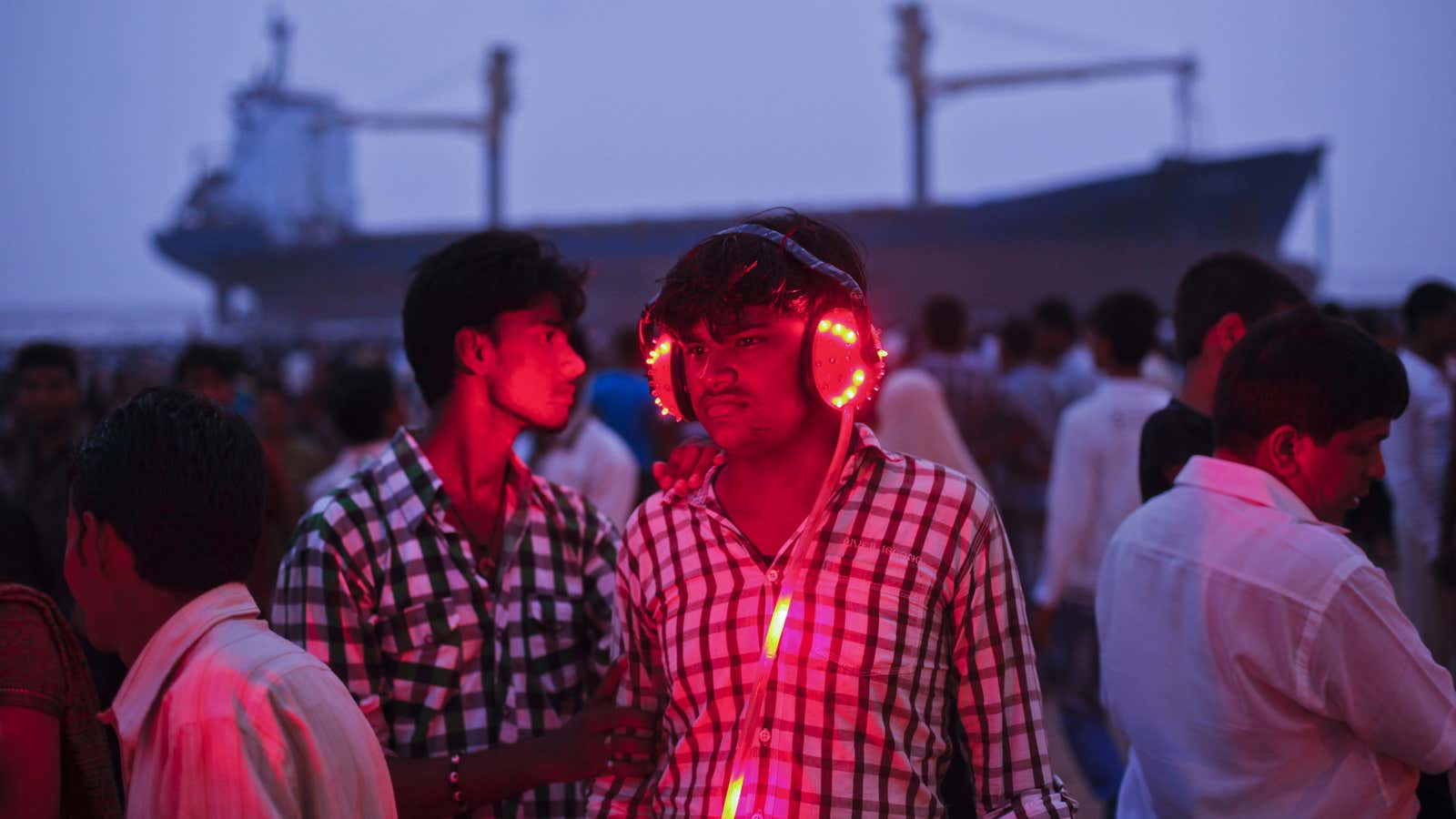The popularity of podcasts in India has so far been fuelled by long office commutes, but with Covid-19 forcing people to stay indoors and work from home, the fate of the industry hangs in the balance.
While online video streaming has seen a bumper growth during the Covid-19 lockdown, podcasts haven’t really witnessed a boom, according to Indus Vox Media (IVM), one of the leading podcast content creators in India. Yet, there’s a steady 10-15% month-on-month growth in listeners.
Last year, estimates pegged India’s podcast audience at around 40 million. Amit Doshi, co-founder of IVM, believes the number of avid users is still lower than that. Doshi spoke to Quartz about creating podcasts amid Covid-19 and the increasing competition in the industry. Edited excerpts:
How has the disappearance of commuters affected your audience?
We used to have big spikes to download content at certain times of day, which was mostly in the morning or evening during commute times. Now, without commutes, downloads have flattened throughout the day. And they’re even tuning in on the weekends. Earlier, Saturday-Sunday traffic was 40% less than Friday traffic. The drop has halved.
Our takeaway is that people have continued to listen in spite of the fact that behaviour (commuting) while consuming content no longer exists. They have still found time (for podcasts).
What kind of Covid-19-related shows have you produced recently?
Each show has its own take. For example, Advertising is Dead looks at content in a post-coronavirus world. Shows like All Things Policy focus on the conversation around governments and institutional policies. On Cyrus Says, we complain about coronavirus and how it’s messing with our lives. The kind of content we do can’t divorce itself from the world.
What have the challenges to podcast production been during the lockdown?
We have been able to maintain production schedules. But we’re used to working in a studio. Having people working in a distributed method has challenges. There have been some slips here and there but we still released 200 or so episodes last month, which is what we expected.
Is it easier to create audio content than videos in a post-Covid-19 world?
The crews that create audio content are much smaller. Still, you need a number and a certain amount of coordination. While we’re being able to make things work, it’s not the same as doing your best work.
What steps are you taking to make production during lockdown easier for creators?
You can’t standardise quality but we give guidance on best practices like the location of recording, how you should go about doing it, what basic equipment you should have, and so on.
Giants like Spotify and more recently, JioSaavn, have entered the space. Is that a threat?
India is such an underserved market that the more people know about podcasts, the better. JioSaavn, Spotify, or Audible Suno, or any of the larger companies, are doing a good job of publicising podcasts generally. Getting people exposed to the medium is our number one challenge today.
Despite over 500 million Indians having access to the internet, why is the awareness of podcasts still low?
Unlike other parts of the world, we don’t have talk radio. What it does is act as a feeder into podcasts. You’re used to listening to certain kinds of content, and podcasts are a better way to access that content. You’ll see similar stories play out on TV wherein YouTube and Netflix are better ways to access it. In India, we don’t have that. The challenge is to make people aware of this kind of content first. You’re not graduating a user to listening in a certain way to podcasts.
Since there has been no breakout growth, do you worry the reach is stagnating?
Audio content is the most underserved of media markets in India and the number of people who will wind up consuming this content will dwarf the numbers today. We’re at the very start of a hockey stick curve, if you will.
